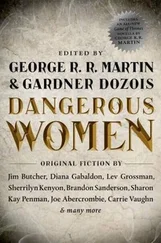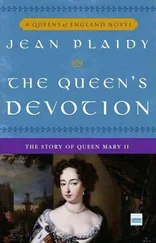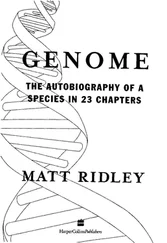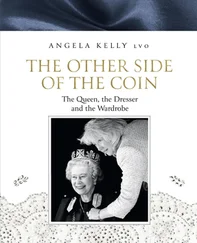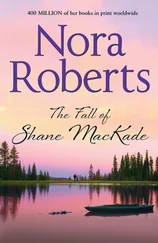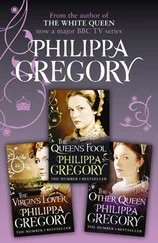The Queen - Matt Ridley
Здесь есть возможность читать онлайн «The Queen - Matt Ridley» весь текст электронной книги совершенно бесплатно (целиком полную версию без сокращений). В некоторых случаях можно слушать аудио, скачать через торрент в формате fb2 и присутствует краткое содержание. Жанр: Старинная литература, на английском языке. Описание произведения, (предисловие) а так же отзывы посетителей доступны на портале библиотеки ЛибКат.
- Название:Matt Ridley
- Автор:
- Жанр:
- Год:неизвестен
- ISBN:нет данных
- Рейтинг книги:4 / 5. Голосов: 1
-
Избранное:Добавить в избранное
- Отзывы:
-
Ваша оценка:
- 80
- 1
- 2
- 3
- 4
- 5
Matt Ridley: краткое содержание, описание и аннотация
Предлагаем к чтению аннотацию, описание, краткое содержание или предисловие (зависит от того, что написал сам автор книги «Matt Ridley»). Если вы не нашли необходимую информацию о книге — напишите в комментариях, мы постараемся отыскать её.
Matt Ridley — читать онлайн бесплатно полную книгу (весь текст) целиком
Ниже представлен текст книги, разбитый по страницам. Система сохранения места последней прочитанной страницы, позволяет с удобством читать онлайн бесплатно книгу «Matt Ridley», без необходимости каждый раз заново искать на чём Вы остановились. Поставьте закладку, и сможете в любой момент перейти на страницу, на которой закончили чтение.
Интервал:
Закладка:
Most body parts, such as wings and beaks, should therefore be most symmetrical when they are just the right size and be the least symmetrical when stress has left them too small or too large: If Good-geners are right, ornaments should be the most symmetrical when they are the largest because large ornaments indicate the best genes and the least stress: If Fisherians are right, you would expect no relationship between ornament size and symmetry; if anything, the largest ornaments should be the least symmetrical because they reflect nothing about the owner other than that he can grow the largest ornament.
Moller noticed that, among the swallows he studied, the longest tails of the males were also the most symmetrical. This was quite unlike the pattern of other feathers, such as wings, which obeyed the usual rule: The most symmetrical were the ones closest to the average length: In other words, whereas most feathers show a U-shaped curve of asymmetry against length, tail streamers show a THE PEACOCK ' S TALE
:::153 :::
steady upward progression: Since the swallows with the longest tails are the most successful in securing mates, it follows that the most symmetrical tails are also doing better. So Moller cut or elongated the tail feathers of certain males and at the same time enhanced or reduced the symmetry of the tails. Those with longer tails got mates sooner and reared more offspring, but within each class of length, those with enhanced symmetry did better than those with reduced symmetry."
Moller interprets this as unambiguous evidence in favor of Good-genes, for it shows that a condition-dependent trait—symmetry—is sexually selected: He joined forces with Pomiankowski to begin to separate those ornaments that show a correlation between symmetry and size from those that do not—in effect, to separate Good-genes from Fisher: Their initial conclusion was that animals with single ornaments—such as a swallow with a long tail—are Good-geners and show increasing symmetry with increasing size, whereas animals with multiple ornaments—such as a pheasant with its long tail, red facial roses, and colorful feather patterns—are mostly Fisherian, showing no relationship between size and symmetry. Since then, Pomiankowski has returned to the subject from a different angle, arguing that Fisher and many ornaments are likely to predominate when the cost to females of choosing is cheap; Good-genes will predominate when the cost of choosing is high: Again we reach the same conclusion: Peacocks are Fisherian; swallows are Good-geners.'°
HONEST JUNGLE FOWL
So far I have considered the evolution of male ornaments mainly from the female 's point of view because it is her preferences that drive that evolution. But in a species such as a peafowl, where female choice of mate rules, the male is not entirely a passive spectator of his evolutionary fate. He is both an ardent suitor and an eager salesman: He has a product to sell—his genes, perhaps—and information to impart about that product, but he does not simply
::: 154 :::
The Red Queen
hand the information over and await the peahen's decision. He is out to persuade her, to seduce her. And just as she is descended from females who made a careful choice, so he is descended from males who made a hard sell.
The analogy of the sales pitch is revealing, for advertisers do not promote their product merely by providing information about it. They fib, exaggerate, and try to associate it with pleasur-able images: They sell ice cream using sexy pictures, airplane tickets using couples walking hand in hand on beaches, instant coffee using romance, and cigarettes using cowboys.
When a man wants to seduce a woman, he does not send her a copy of his bank statement but a pearl necklace. He does not send her his doctor 's report but lets slip that he runs twenty miles a week and never gets colds. He does not tell her what degree he got but instead dazzles her with wit: He does not display testa-ments to how thoughtful he is but sends her roses on her birthday.
Each gesture has a message: I 'm rich, I'm fit, I'm clever, I 'm nice.
But the information is packaged to be more seductive and more effective, just as the message "Buy my ice cream " catches the eye when it is accompanied by a picture of two good-looking people seducing each other.
In courtship, as in the world of advertising, there is a discrepancy of interests between the buyer and the seller: The female needs to know the truth about the male: his health, wealth, and genes. The male wants to exaggerate the information: The female wants, the truth; the male wants to lie: The very word seduction implies trickery and manipulation."
Seduction therefore becomes a classic Red Queen contest, although this time the two protagonists are male and female, not host and disease: Zahavi 's handicap theory, as explored by Hamilton and Zuk, predicted that honesty would eventually prevail and males who cheat would be revealed: This is because the handicap is the female's criterion of choice for the very reason that it reveals the male 's state of health.
The red jungle fowl is the ancestor of the domestic chicken.
Like a farmyard rooster, the cock is equipped with a good many THE PEACOCK ' S TALE
:::155 :::
ornaments that his mate does not share: long, curved tail feathers, a bright ruff around the neck, a red comb on the crown of his head, and a loud dawn call, to name the most obvious. Marlene Zuk wanted to find out which of these mattered to female jungle fowl, so she presented sexually receptive hens with two tethered males and examined which they chose. In some of the trials one of the cocks was reared with a roundworm infection in his gut, which affected his plumage, beak, and leg length very little but showed clearly in his comb and eye color, both of which were less colorful than in healthy males. Zuk found that hens preferred cocks with good combs and eyes but paid less attention to plumage. She failed to make hens go for males with fake red elastic combs on their heads, however; they found them too bizarre. Nonetheless, it was clear that hens paid most attention to the most health informative feature of a cock."
Zuk knew that poultry farmers, too, observe the comb and wattles of a cockerel to judge his health. What intrigued her was the idea that the wattles were more "honest " about the state of a cockerel than his feathers. Many birds, especially in the pheasant family, grow fleshy structures about their faces to emphasize during display: Turkeys grow long wattles over their beaks, pheasants have fleshy red "roses " on their faces, sage grouse bare their air sacs, and tragopans have expandable electric blue bibs beneath their chins.
A cockerel's comb is red because of the carotenoid pigments in it. A male guppy fish is rendered orange by carotenoids also, and a housefinch ' s and a flamingo ' s red plumage also depends on carotenoids. The peculiar thing about carotenoids is that birds and fish cannot synthesize them within their own tissues; they extract them from their food—from fruit, shellfish, or other plants and invertebrates. But their ability to extract carotenoids from their food and deliver it to their tissues is greatly affected by certain parasites. A cockerel affected by the bacterial disease coccidiosis, for example, accumulates less carotenoid in his comb than a healthy cockerel—even when both animals have been fed equal quantities of carotenoid: Nobody knows exactly why the parasites have this
::: 156 :::
The Red Queen
specific biochemical effect, but it seems to be unavoidable and is therefore extremely useful to the female: The brightness of carotenoid-filled tissues is a visible sign of the levels of parasite infection. It is not surprising that red and orange are common colors in fleshy ornaments used in display, such as the combs, wattles, and lappets of pheasants and grouse."
Читать дальшеИнтервал:
Закладка:
Похожие книги на «Matt Ridley»
Представляем Вашему вниманию похожие книги на «Matt Ridley» списком для выбора. Мы отобрали схожую по названию и смыслу литературу в надежде предоставить читателям больше вариантов отыскать новые, интересные, ещё непрочитанные произведения.
Обсуждение, отзывы о книге «Matt Ridley» и просто собственные мнения читателей. Оставьте ваши комментарии, напишите, что Вы думаете о произведении, его смысле или главных героях. Укажите что конкретно понравилось, а что нет, и почему Вы так считаете.

